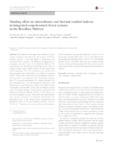Por favor, use este identificador para citar o enlazar este ítem:
http://www.alice.cnptia.embrapa.br/alice/handle/doc/1061031Registro completo de metadatos
| Campo DC | Valor | Lengua/Idioma |
|---|---|---|
| dc.contributor.author | KARVATTE JUNIOR, N. | pt_BR |
| dc.contributor.author | KLOSOWSKI, E. S. | pt_BR |
| dc.contributor.author | ALMEIDA, R. G. de | pt_BR |
| dc.contributor.author | MESQUITA, E. E. | pt_BR |
| dc.contributor.author | OLIVEIRA, C. C. de | pt_BR |
| dc.contributor.author | ALVES, F. V. | pt_BR |
| dc.date.accessioned | 2017-01-17T11:11:11Z | pt_BR |
| dc.date.available | 2017-01-17T11:11:11Z | pt_BR |
| dc.date.created | 2017-01-17 | pt_BR |
| dc.date.issued | 2016 | pt_BR |
| dc.identifier.citation | International Journal of Biometeorology, v. 60, n. 12, p. 1933-1941, Dec. 2016. | pt_BR |
| dc.identifier.uri | http://www.alice.cnptia.embrapa.br/alice/handle/doc/1061031 | pt_BR |
| dc.description | The objective of this paper was to perform a microclimate evaluation and determine the indexes of thermal comfort indexes, in sun and shade, in integrated crop-livestock-forest systems with different arrangements of eucalyptus and native trees, in the Brazilian Midwest. The experiment was conducted at Embrapa Beef Cattle in Campo Grande, state of Mato Grosso do Sul, Brazil, from July to September 2013. The evaluations were conducted on four consecutive days, from 8:00 a.m. to 5:00 p.m., local time (GMT?4:00), with 1 hour intervals, recording the microclimate parameters: air temperature (°C), black globe temperature (°C), wet bulb temperature (°C), relative humidity (%), and wind speed (m.s?1), for the subsequent calculation of the Temperature and Humidity Index, the Black GlobeTemperature and Humidity Index, and the Radiant Thermal Load. The largest changes in microclimate parameters werefound in the full sun, between 12:00 p.m. and 1:00 p.m., in less dense eucalyptus system, followed by the scattered native trees system, resulting in a maximum Temperature and Humidity Index of 81, Black Globe Temperature and Humidity Index of 88 and Radiant Thermal Load of 794 W m?2. Therefore, it is observed that with the presence of trees in pastures were possible reductions of up to 3.7 % in Temperature and Humidity Index, 10.2 % in the Black Globe Temperature and Humidity Index, and 28.3 % of the Radiant Thermal Load in the shade. Thus, one can conclude that the presence of trees and their arrangement in the systems provide better microclimate conditions and animal thermal comfort in pastures | pt_BR |
| dc.language.iso | eng | eng |
| dc.rights | openAccess | eng |
| dc.subject | Ambience | pt_BR |
| dc.subject | Native trees | pt_BR |
| dc.title | Shading effect on microclimate and thermal comfort indexes in integrated crop-livestock-forest systems in the brazilian Midwest. | pt_BR |
| dc.type | Artigo de periódico | pt_BR |
| dc.date.updated | 2017-03-03T11:11:11Z | pt_BR |
| dc.subject.nalthesaurus | Animal welfare | pt_BR |
| dc.subject.nalthesaurus | Eucalyptus | pt_BR |
| dc.subject.nalthesaurus | Shade | pt_BR |
| dc.subject.nalthesaurus | Thermal stress | pt_BR |
| riaa.ainfo.id | 1061031 | pt_BR |
| riaa.ainfo.lastupdate | 2017-03-03 | pt_BR |
| dc.contributor.institution | NIVALDO KARVATTE JR, UNIOESTE; ELCIO SILVÉRIO KLOSOWSKI, UNIOESTE; ROBERTO GIOLO DE ALMEIDA, CNPGC; EDUARDO EUSTÁQUIO MESQUITA, UNIOESTE; CAROLINE CARVALHO DE OLIVEIRA, UFVJM; FABIANA VILLA ALVES, CNPGC. | pt_BR |
| Aparece en las colecciones: | Artigo em periódico indexado (CNPGC)  | |
Ficheros en este ítem:
| Fichero | Descripción | Tamaño | Formato | |
|---|---|---|---|---|
| Shadingeffectonmicroclimate.pdf | 1.88 MB | Adobe PDF |  Visualizar/Abrir |









